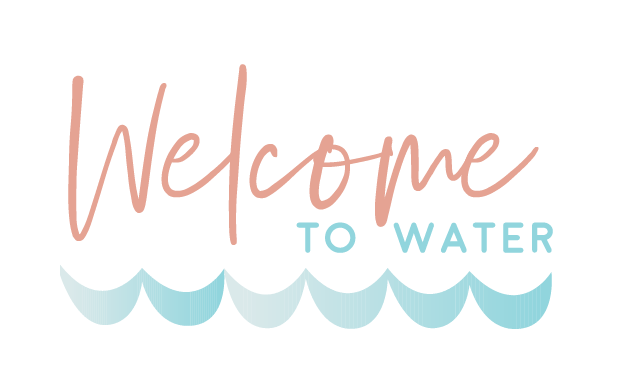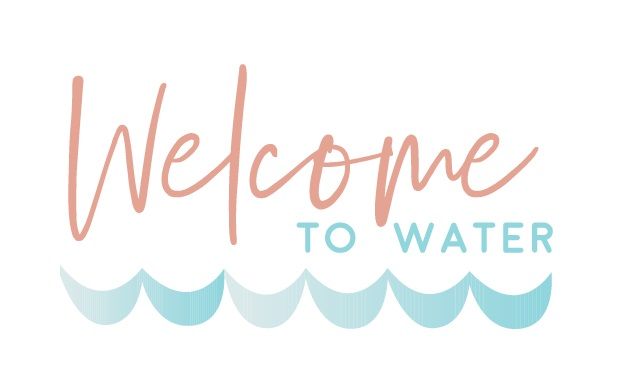Bath time with your 6 month old
Jessie Jones
Your baby is now 6 months old 💨 Half way through their first year of life and full of smiles and laughter! They are learning so many new skills and their desire to use them grows every day. This month as their core strength grows stronger, they may start sitting more without support, begin to crawl and may even get their first tooth.
You will notice your babies language skills really taking off this month, their babbling is now an imitation of lots of sounds and words they are hearing. At your baby swim lessons and during bath time together you may notice your baby singing along to the songs and making hand actions. They now associate songs with the activities and are already preparing for what the activity entails when they hear the song. Keep reading and talking to them about what you are doing through out the day to build on these new language and communication skills, allowing time for them to respond in the conversation too.
Your baby may now be able to bear weight on their legs in a supported standing position. At swim lessons they may be ready to try a supported seated or standing submersion from a shallow ledge or step. Cue them and gently support them as you allow them to initiate their own submersion by moving their body forward into the water and timing their own submersion.
At this age they love fine motor games and finger-plays like itsy bitsy spider and patty-cake and toys like stacking cups will become a favourite as they learn to master her hands and fingers. In the bath and during swimming lessons allow time for your baby to experiment and explore using their hands independently to grasp, release, post, stack and play with toys.
Emerging Developmental milestones and bath activities for your 6 Month old:
Sits with minimal support and Uses hands to ‘rake’ small objects:
Sit her in the bath between your legs and be ready to offer her support if she's not quite sitting on her own for long. Place some pieces of bath foam toys in front of her and show her how to stack them up into little floating towers and to stick them onto the sides of the bath.
Sit her in the bath between your legs and be ready to offer her support if she's not quite sitting on her own for long. Place some pieces of bath foam toys in front of her and show her how to stack them up into little floating towers and to stick them onto the sides of the bath.
Notices toys that make sounds:
Toys that make sounds and toys that don’t, collect some bath toys that squeak and some that don't. Place her in a seated position between your legs in the bath and experiment explaining the different objects and noises with both and then ask her to find the “squeaky toys”. placing these up on the side of the bath each time she finds one.
Babbles and imitates sound:
5 little ducks - Lay her back on your drawn up thighs and sing song with hand actions and moving toy ducks. Sing part of the song again and stop during the song to give her a chance to join in. Place the ducks all on the edge of the bath, change her to a supported standing position and practice 'monkey monkey' along the bath to collect all the duck. Practice letting her throw them into the bath each time she gets one.
Blows raspberries:
Bubble blowing, Fill the bath water up to above your waist, place her into a face to face hold with your hands together under her chest. draw your knees up and lean forward to demonstrate bubbles, let her attempt to copy you. Vary the noise and volume of your bubbles, loud, quiet, like a train etc. Learning to blow bubbles and expelling air helps your baby with recovering after a submersion under water. They learn how to coordinate blowing away the water that runs down their face after they have surfaced.
Bubble blowing, Fill the bath water up to above your waist, place her into a face to face hold with your hands together under her chest. draw your knees up and lean forward to demonstrate bubbles, let her attempt to copy you. Vary the noise and volume of your bubbles, loud, quiet, like a train etc. Learning to blow bubbles and expelling air helps your baby with recovering after a submersion under water. They learn how to coordinate blowing away the water that runs down their face after they have surfaced.
Loves to be massaged and touched:
Give her a little massage and sing itsy bitsy spider to her as you show her the hand moments and do some creeping up her belly, get ready for the giggles and don't be surprised if she babbles along to the chorus. Try swapping the side of her body the spider crawls up each time you sing.
Write your awesome label here.
Write your awesome label here.
Write your awesome label here.
Breath control:
If your baby has already started her next level of swimming lessons after the Welcome to water program she may have learnt how to hold her breath voluntarily and may have even had her fist comfortable and safe underwater experience.
Continuing to practice or start practicing the following breath control cues to build and extend on your child's breath control:
Continuing to practice or start practicing the following breath control cues to build and extend on your child's breath control:
Seat baby on your lap to one side, so you can see her face. Watch her reaction to the cues and for any signs she has had enough.
Cup of water: Cue baby "Name, ready go" pour on the forehead with a water shot. After the baby becomes familiar with this activity and responds positively for a few weeks, progress to an extended 2-second and then 3-second pour on the forehead. Practice this a few times each bath, Let baby recover and watch for their breathing to come back to normal between each turn.
Shower: Cue baby "Name, ready go" Start with momentarily under the shower.
Progress to 2 seconds and then 3 seconds under the shower. Practice this a few times each shower, Let baby recover and watch for their breathing to come back to normal between each turn.
Read and respond to your babies cues and stop the activity if your baby has had enough for the day or isn't enjoying the activity. This will build trust and communication between you and ensure that baby is happy to try again next time knowing you will respond to how she feels.
These fun bath time activities help to develop the skills you and your baby are learning at swimming lessons together. From here keep learning together on a force free introduction to water, sign up for regular baby swim lessons at your local Welcome to water provider swim school.
Make swimming together a regular, enjoyable part of your lives.
Thank you!
CLICK THE LINK BELOW
to join our free online course, and help give your child the best possible start on their learn to swim journey.
to join our free online course, and help give your child the best possible start on their learn to swim journey.
Write your awesome label here.
Write your awesome label here.
Write your awesome label here.
Love our information? Click on sign up below, and receive a monthly update on your child's birthday, following their development with tips and tricks to do at home in the bath or pool.

© Welcome to Water
Subscribe to our newsletter now!
Get weekly updates on live streams, news and more right in your mailbox.
Thank you!

